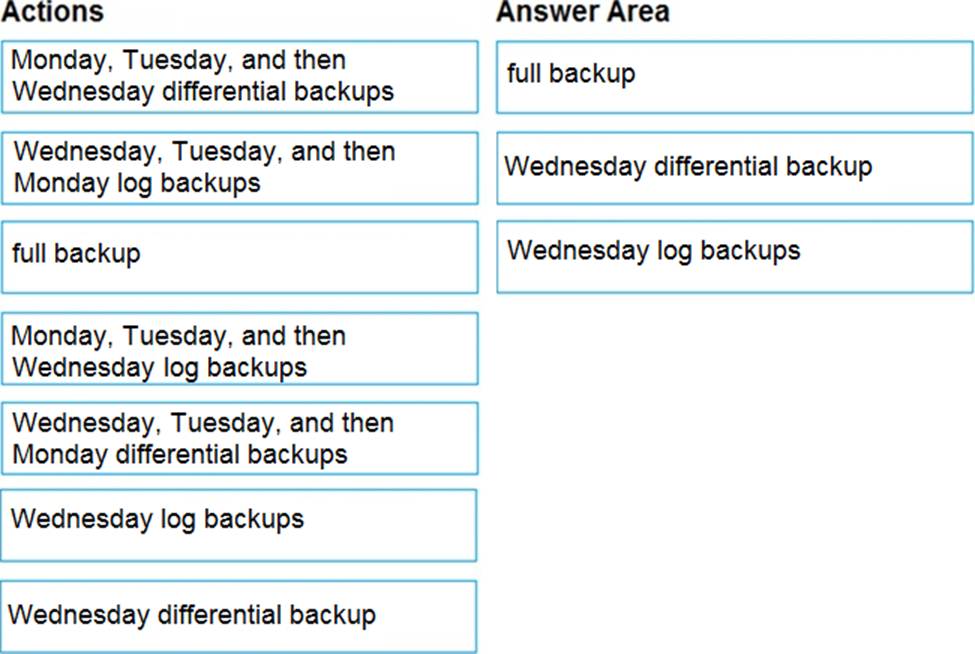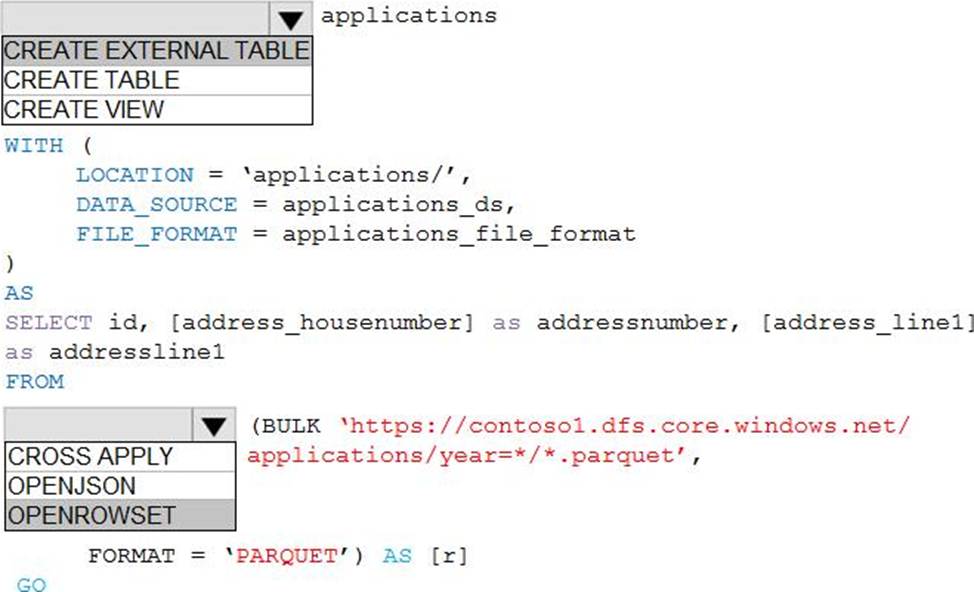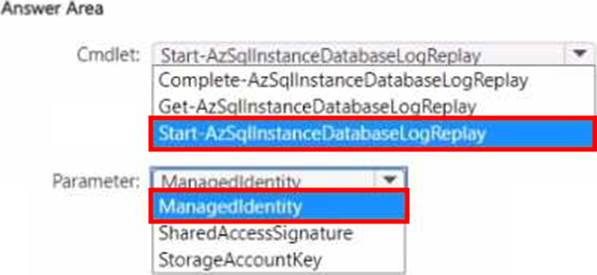Microsoft DP-300 Übungsprüfungen
Zuletzt aktualisiert am 27.04.2025- Prüfungscode: DP-300
- Prüfungsname: Administering Microsoft Azure SQL Solutions
- Zertifizierungsanbieter: Microsoft
- Zuletzt aktualisiert am: 27.04.2025
DRAG DROP
You have SQL Server on an Azure virtual machine that contains a database named DB1. DB1 is 30 TB and has a 1-GB daily rate of change.
You back up the database by using a Microsoft SQL Server Agent job that runs Transact-SQL commands. You perform a weekly full backup on Sunday, daily differential backups at 01:00, and transaction log backups every five minutes.
The database fails on Wednesday at 10:00.
Which three backups should you restore in sequence? To answer, move the appropriate backups from the list of backups to the answer area and arrange them in the correct order.
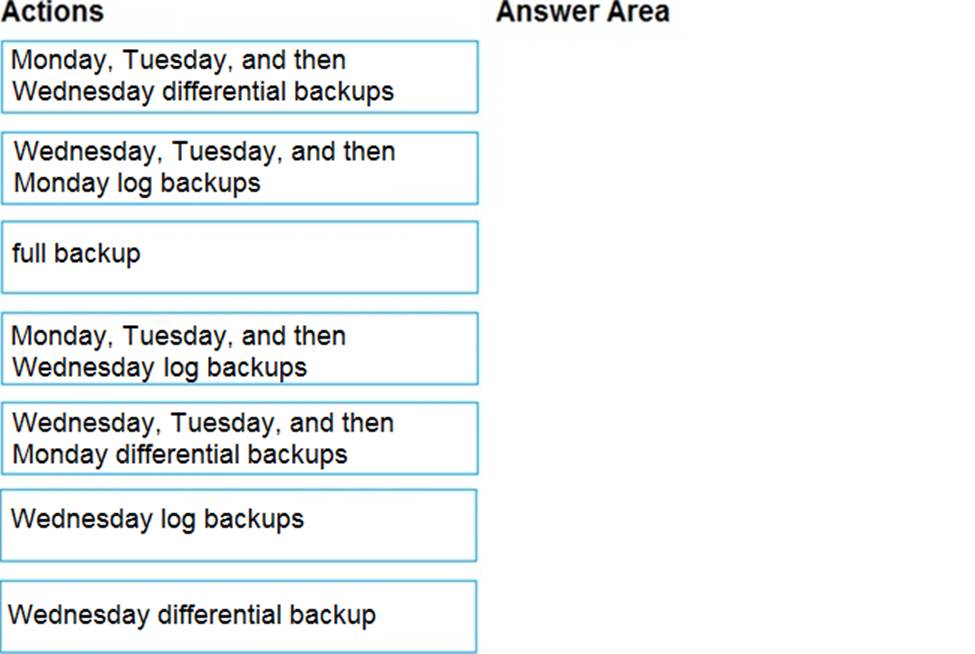
Note: This question is part of a series of questions that present the same scenario. Each question in the series contains a unique solution that might meet the stated goals. Some question sets might have more than one correct solution, while others might not have a correct solution.
After you answer a question in this section, you will NOT be able to return to it. As a result, these questions will not appear in the review screen.
You have two Azure SQL Database servers named Server1 and Server2. Each server contains an Azure SQL database named Database1.
You need to restore Database1 from Server1 to Server2. The solution must replace the existing Database1 on Server2.
Solution: From Microsoft SQL Server Management Studio (SSMS), you rename Database1 on Server2 as Database2. From the Azure portal, you create a new database on Server2 by restoring the backup of Database1 from Server1, and then you delete Database2.
Does this meet the goal?
- A . Yes
- B . No
You have an Azure subscription.
Vou need to deploy two instances of SQL Server on Azure virtual machines in a highly available configuration that will use an Always On availability group.
The solution must meet the following requirements:
• Minimize how long it takes to fail over.
• Maintain existing connections to the primary replica during a failover.
What should you do?
- A . Connect each virtual machine to a single subnet on a single virtual network.
- B . Connect each virtual machine to a single subnet on a virtual network. Deploy a standard Azure load balancer.
- C . Connect each virtual machine to a different subnet on a single virtual network.
- D . Connect each virtual machine to a different subnet on a virtual network. Deploy a basic Azure load balancer.
HOTSPOT
You are building a database in an Azure Synapse Analytics serverless SQL pool.
You have data stored in Parquet files in an Azure Data Lake Storage Gen2 container.
Records are structured as shown in the following sample.
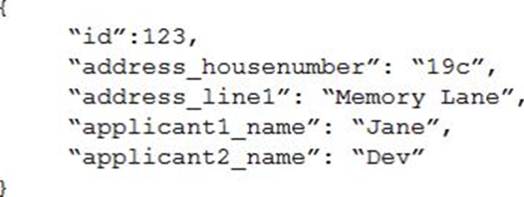
The records contain two applicants at most.
You need to build a table that includes only the address fields.
How should you complete the Transact-SQL statement? To answer, select the appropriate options in the answer area. NOTE: Each correct selection is worth one point.
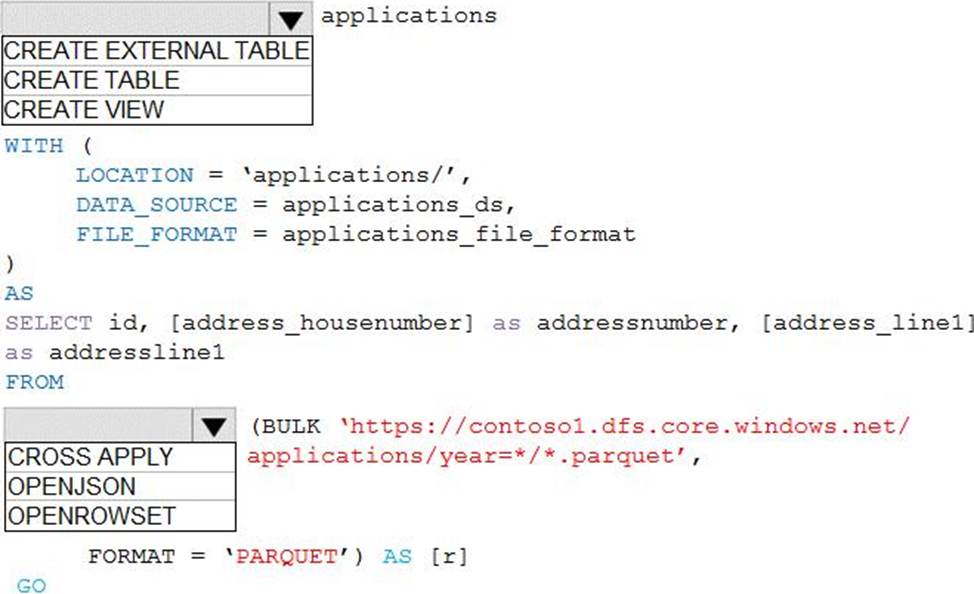
HOTSPOT
You have an Azure SQL managed instance named Server1 and an Azure Blob Storage account named storage1 that contains Microsoft SQL Server database backup files.
You plan to use Log Replay Service to migrate the backup files from storage1 to Server1. The solution must use the highest level of security when connecting to storage1.
Which PowerShell cmdlet should you run, and which parameter should you specify to secure the connection? To answer, select the appropriate options in the answer area. NOTE: Each correct selection is worth one point.
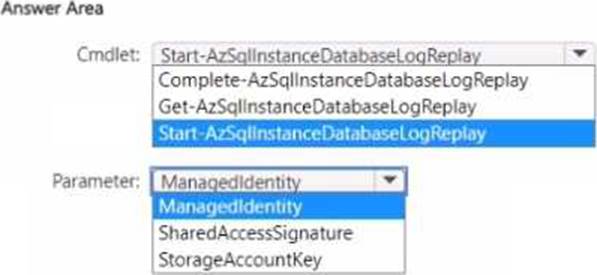
You are planning disaster recovery for the failover group of an Azure SQL Database managed instance.
Your company’s SLA requires that the database in the failover group become available as quickly as possible if a major outage occurs.
You set the Read/Write failover policy to Automatic.
What are two results of the configuration? Each correct answer presents a complete solution. NOTE: Each correct selection is worth one point.
- A . In the event of a datacenter or Azure regional outage, the databases will fail over automatically.
- B . In the event of an outage, the databases in the primary instance will fail over immediately.
- C . In the event of an outage, you can selectively fail over individual databases.
- D . In the event of an outage, you can set a different grace period to fail over each database.
- E . In the event of an outage, the minimum delay for the databases to fail over in the primary instance will be one hour.
SIMULATION
Task 6
You need to ensure that any enhancements made to the Query Optimizer through patches are available to dbl and db2 on sql37006895.
Note: This question is part of a series of questions that present the same scenario. Each question in the series contains a unique solution that might meet the stated goals. Some question sets might have more than one correct solution, while others might not have a correct solution.
After you answer a question in this section, you will NOT be able to return to it. As a result, these questions will not appear in the review screen.
You have an Azure Synapse Analytics dedicated SQL pool that contains a table named Table1.
You have files that are ingested and loaded into an Azure Data Lake Storage Gen2 container named container1.
You plan to insert data from the files into Table1 and transform the data. Each row of data in the files will produce one row in the serving layer of Table1.
You need to ensure that when the source data files are loaded to container1, the DateTime is stored as an additional column in Table1.
Solution: You use an Azure Synapse Analytics serverless SQL pool to create an external table that has an additional DateTime column.
Does this meet the goal?
- A . Yes
- B . No
You have an Azure subscription that contains an Azure SQL database named db1.
You need to implement SQL insights for db1.
Which two resources should you create first? Each correct answer presents part of the solution. NOTE: Each correct selection is worth one point
- A . an Azure logic app
- B . a virtual machine
- C . an Azure function
- D . a Log Analytics workspace
- E . a storage account
HOTSPOT
You have an Azure SQL logical server.
You run the following script.
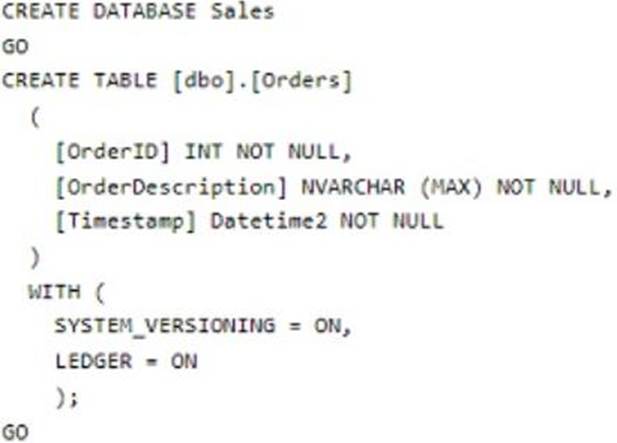
For each of the following statements, select Yes if the statement is true. Otherwise, select No. NOTE: Each correct selection is worth one point.


